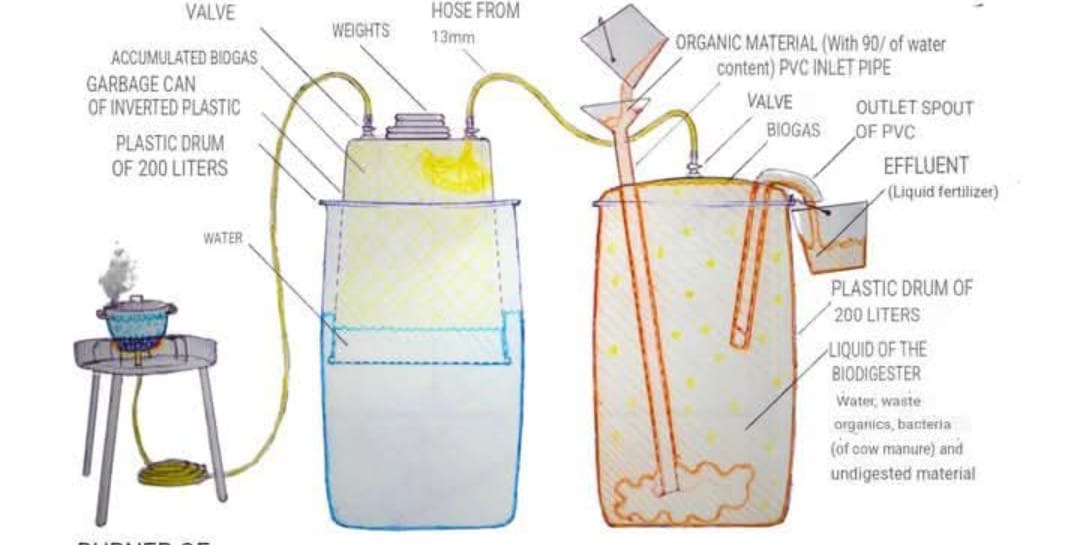The Ultimate Guide to Biodigesters: How Farms Can Convert Organic Waste into Biogas
Introduction
Farming operations produce significant amounts of organic waste, which, if not managed properly, can contribute to environmental degradation. However, this waste can be transformed into a valuable resource—biogas—using biodigesters. Biogas is a clean, renewable energy source that not only reduces environmental impact but also provides farmers with an affordable alternative to fossil fuels.
In this comprehensive guide, we will explore the science behind biodigesters, their benefits, different types, and practical tips on setting up and maintaining one on a farm. Whether you are a small-scale farmer or run a large agricultural operation, this guide will provide you with the knowledge needed to turn waste into energy efficiently.
—
What is a Biodigester?
A biodigester is a system that converts organic waste into biogas and digestate through an anaerobic fermentation process. This process occurs in an oxygen-free environment, where microorganisms break down organic material such as animal manure, crop residues, and food waste.
How Biogas is Formed
1. Collection of Organic Waste: Manure, crop waste, or food scraps are collected and placed inside the biodigester.
2. Anaerobic Fermentation: Microorganisms break down the organic matter in a controlled environment, producing methane (CH₄) and carbon dioxide (CO₂).
3. Biogas Collection: The gas is captured and stored for use as fuel.
4. Digestate Production: A nutrient-rich slurry is left behind, which can be used as a natural fertilizer.
—
Types of Biodigesters
There are several types of biodigesters, each designed for different scales and types of organic waste:
1. Fixed-Dome Biodigester
Structure: A dome-shaped tank made from concrete or brick.
Advantages: Long lifespan, minimal maintenance.
Best for: Small and medium-scale farms.
2. Floating-Drum Biodigester
Structure: A floating drum that moves up and down as gas accumulates.
Advantages: Easy to monitor gas production.
Best for: Small farms or households.
3. Plug-Flow Biodigester
Structure: A long, horizontal tank.
Advantages: Handles fibrous waste efficiently.
Best for: Large farms with a high volume of manure.
4. Covered Lagoon Biodigester
Structure: A large pond covered with a plastic membrane.
Advantages: Low maintenance, ideal for large farms.
Best for: Dairy and pig farms.
—
Benefits of Biodigesters on Farms
Implementing a biodigester on a farm comes with multiple advantages:
1. Waste Management
Reduces the volume of organic waste.
Prevents contamination of water sources.
Helps in odor control.
2. Renewable Energy Production
Biogas can be used for cooking, heating, and even electricity generation.
Reduces reliance on fossil fuels.
3. Cost Savings
Reduces expenses on fuel and fertilizers.
Provides farmers with an additional source of revenue.
4. Environmental Sustainability
Reduces methane emissions from waste decomposition.
Lowers greenhouse gas emissions compared to fossil fuels.
—
Materials Suitable for Biogas Production
Different types of organic waste can be used in a biodigester, each offering varying biogas yields:
1. Animal Manure
Cow dung, pig manure, and poultry litter are excellent sources.
Cattle manure produces high methane content.
2. Crop Residues
Corn stalks, wheat straw, and rice husks.
Require pre-treatment for efficient breakdown.
3. Food Waste
Vegetable scraps, fruit peels, and leftover food.
High energy potential due to sugar and fat content.
4. Garden Waste
Grass clippings, leaves, and tree trimmings.
Requires a mix with nitrogen-rich waste for better digestion.
—
Step-by-Step Guide to Building a Biodigester
1. Selecting a Location
Choose a well-drained area close to the waste source.
Ensure proper ventilation and easy access for maintenance.
2. Choosing the Right Type
Small farms: Fixed-dome or floating-drum.
Large farms: Plug-flow or covered lagoon.
3. Constructing the System
Install an inlet for waste input.
Set up the anaerobic digestion chamber.
Add a gas storage unit or piping system.
4. Feeding the Biodigester
Maintain a balanced mix of waste materials.
Avoid overloading the system.
Keep the temperature stable (25-35°C for optimal performance).
5. Maintaining the System
Remove solid residues periodically.
Monitor gas pressure and leaks.
Adjust pH levels to avoid acid buildup.
—
Common Challenges and Solutions
1. Low Gas Production
Cause: Improper feeding or temperature fluctuations.
Solution: Maintain a steady input of waste and ensure a stable environment.
2. Clogging
Cause: Fibrous materials not breaking down properly.
Solution: Pre-treat waste by shredding or mixing with water.
3. Foul Odors
Cause: Excess ammonia or system leaks.
Solution: Balance the nitrogen-to-carbon ratio and check for leaks.
4. pH Imbalance
Cause: Overfeeding or accumulation of acids.
Solution: Regularly check pH and add alkaline substances if needed.
—
Real-Life Case Studies: Farms Successfully Using Biodigesters
1. A Dairy Farm in India
A family-run dairy farm installed a fixed-dome biodigester, which now produces enough biogas to power the farm’s kitchen and a small generator.
2. A Pig Farm in Brazil
A large-scale pig farm uses a covered lagoon system, reducing methane emissions and producing energy for farm operations.
3. An Organic Vegetable Farm in Germany
A floating-drum biodigester allows this farm to convert food scraps into biogas, significantly lowering waste management costs.
—
Future of Biogas in Agriculture
The use of biodigesters is expected to grow due to:
Government Incentives: Many countries offer subsidies for renewable energy adoption.
Technological Advancements: Improved microbial strains and smart monitoring systems.
Increased Sustainability Awareness: More farmers are recognizing the benefits of reducing carbon footprints.
—
Conclusion
Biodigesters are a game-changer for sustainable agriculture, turning farm waste into a valuable energy source while reducing environmental impact. Whether you’re a small farmer looking to cut costs or a large-scale operation aiming for sustainability, implementing a biodigester can significantly improve waste management, energy efficiency, and farm productivity.
By understanding how these systems work and following best practices for their maintenance, farmers can harness the power of biogas to create a more sustainable and profitable farming operation.
Would you like help in designing a custom biodigester plan for your farm? Let’s get started!
